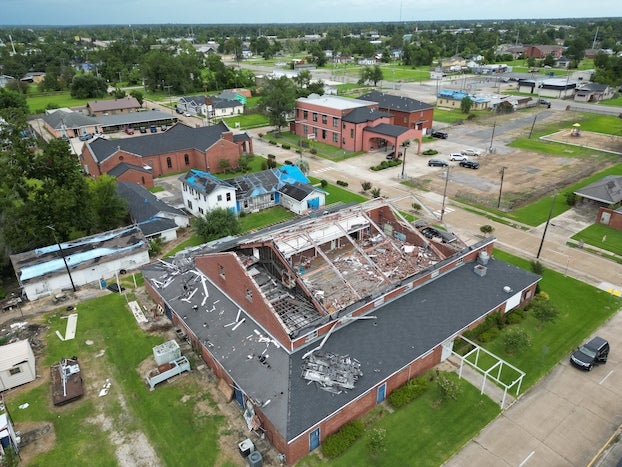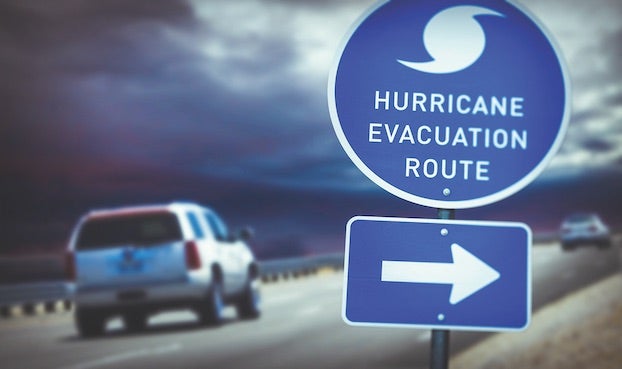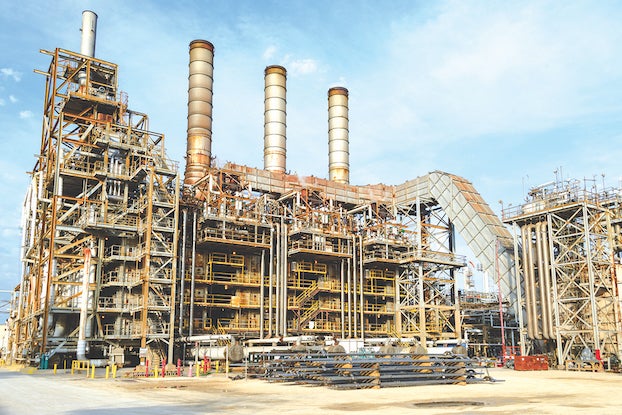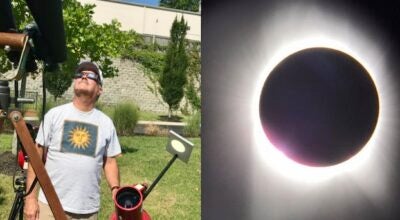Bishop: ‘We take a lively interest in Sacred Heart parish’
Published 4:23 pm Thursday, September 15, 2022

- An aerial photo of Sacred Heart Catholic Church in Lake Charles shows destruction remains nearly two years after Hurricane Laura devastated Southwest Louisiana. (Reader-submitted photo)
Parishioners of Sacred Heart of Jesus in Lake Charles gathered Wednesday to hear responses from Diocese of Lake Charles officials regarding the recent controversy surrounding their church.
This summer, a series of Letters to the Editor were published in the American Press that discussed frustrations over hurricane recovery throughout the Diocese. These letters led to accusations implying the Diocese made discriminatory recovery decisions based on race.
In light of these accusations, the Most Rev. Bishop Glen John Provost announced two public meetings to allow residents the opportunity to hear answers from the Diocese directly.
The officials in attendance at Wednesday’s meeting were Provost; the Very Rev. Ruben Buller, vicar general and moderator of the Curia for the Diocese of Lake Charles; the Rev. Jeffrey Starkovich, diocesan spokesperson and pastor of St. Pius X Catholic Church in Ragley; the Rev. Joby Mathew, HGN and pastor of Sacred Heart of Jesus in Lake Charles; Deborah Carrier, social justice chairperson; and Randy Goodloe, architect and president of the RMG Architectural Corporation.
Starkovich served as the moderator for the meeting, and began by explaining the basic logistics of hurricane recovery and giving a general overview of the setbacks the Diocese has faced.
“We know that this is a very complex set of processes,” he said. “We’re all dealing with so much loss and pain and heartbreak.”
Starkovich said the Diocese suffered four major disasters — Hurricanes Laura and Delta, a winter storm and a flood —in less than 12 months nearly two years ago. These events were unprecedented, and the Diocese was not prepared to repair damage on such a massive scale, he said.
Starkovich said Provost had two main priorities following Hurricane Laura. “No. 1 was to bring stability to a very unstable situation.” To achieve an initial semblance of stability, the Diocese collaborated to bring food, water and supplies to parishes.
“Emergency work needed to begin as quickly as possible,” he said. However, difficulties with funding arose.
“One of the great challenges that came up immediately following the storm was the issue of funding,” he said. The range of funding needed to fully repair structures in the Diocese ranges from $135 million to $150 million. The Diocese only had a named storm limit of $30 million, which was set by their insurance company, Catholic Mutual, via actuarial studies.
After Starkovich presented the storm recovery overview, Carrier began reading pre-submitted questions from Sacred Heart parishioners.
The status of the roofs of Sacred Heart parish facilities were a high priority, as leaks have become a recurring issue. According to Goodloe, directly after the storms, a different litigation company put a new roof on the church. Work is now being done to correct the mistakes of that company, and efforts are being made to receive compensation for the mistakes.
Questions of funding were reoccurring. Officials of the Diocese ensured that despite funding issues, every structure in the Diocese would be addressed and repaired if possible.
Buller said when the recovery team initially made their rounds, pastoral councils were informed they were only expected to “pay back what they can” to the Diocese. A primary reason for this decision was due to the fact that the cost of repairs cannot be easily confirmed.
In 2023, the Diocese will look into working with pre-disaster businesses to create concrete dunging plans in case of future natural disasters.
Dr. Carl Wendell Ross Sr., the author of the first letter to the editor, submitted questions in response to the Diocesan statements made in the American Press. A primary concern of his was in regards to the $5 million in recovery funding that was provided to St. Louis High School, in comparison to the plans to demolish what remains of the Sacred Heart structures that housed the family life center, gymnasium, and Historic Sacred Heart High School.
Provost said FEMA prioritizes funding for schools over religious structures.
“We can’t reduce courtesy to dollars,” he said.
Within Ross’ questions, it was requested the Diocese release an official statement recanting a statement they made about the previous pastor of Sacred Heart Parish, the Rev. Richard “Uche” Adiukwu.
The original statement made by Buller was in reference to poor communication between the Diocese, pastoral council and parishioners.
“It could have been the former pastor who maybe chose not to communicate these things,” Buller told the American Press in an article that ran on Aug. 21. “It could also have been that there is a new pastor there, and it could have been the former pastor who maybe chose not to communicate these things.”
In response to the request at the meeting, Buller said, “I can only tell the truth. I cannot answer anything other than the truth, which is that Father Uche was communicated with and what I have been told by parishioners is not what I told him.”
He said he has not been to any pastoral council meetings and his “role was simply to give the tools to the pastor of what and how to communicate to his parishioners.”
Provost said the pastoral council is only “as active as the pastor allows it to be.”
“We have roughly 37 parishes in the Diocese,” he said. “Each (pastor) organizes their pastoral council within the parameters, within diocesan policy, as he wishes them to interact.
“We take a lively interest in Sacred Heart parish, and have for quite some time,” he said. “In light of the damages which occurred and where we find ourselves … I think there is a great opportunity on our part to work together.”
Provost ended the meeting with a personal donation of $20,000 to Sacred Heart Parish.
The bishop will host a second meeting tonight.





